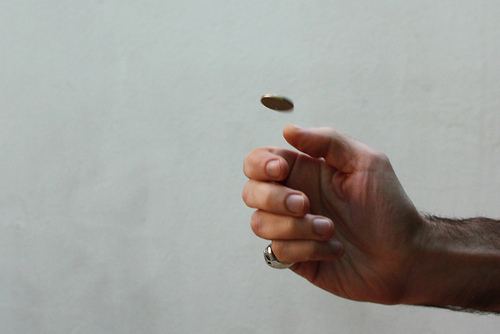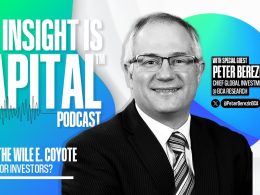by Brian Portnoy, The Investor's Paradox
Can you feel it? Can you? It’s coming: A wave of comments and analyses of the so-called “January Effect.” This is the argument that “as goes the stock market in January, so goes the entire year.”
When the market closed on the last day of January 2015 just a few hours ago, the indexes were well in the red. Both the S&P 500 and Dow Jones Industrial Average dropped more than 3% during the month.
A casual glance at the data suggests that this does not bode well for overall 2015 returns. The historical fact pattern is striking. Over the past 35 years from 1980 to 2014, there were 26 years in which the pattern held: green openings were followed by positive years while red starts were associated with down years. A hit rate of 74% (26 out of 35) doesn’t seem like a random walk or a coin flip.
So what’s the reason for this apparent anomaly?
Here’s the real answer: We don’t know. And even more important, it’s not even clear that it’s a real pattern at all.
Let’s break down the numbers a bit. Over these 35 years, the S&P 500 had 23 positive and 12 negative January’s. Out of the 23 green January’s the market was positive for the year in 21 of them; and 5 out of the 12 negative starts were followed by calendar years in the red .
What jumps off the page is that the hit rate in up years is much higher during down years. The hit rate in down years is just worse than a coin flip. In 7 of 12 years (1982, 1984, 1992, 2003, 2005, 2009 and 2010), a negative January occurred in a year that ended up being positive overall.
This suggests the January effect is somewhat an unintended outcome of the fact that the market has an upward bias: it tends to go up over long stretches of time, and that’s especially been the case since the bull market onset in the early 1980s. In this sample, 80% (28 of 35) of years were positive. As there are generally more up months than down months in market history, our baseline expectation should be that that this pattern holds more than half the time, thus better than the market’s supposedly random walk.
But what if in fact the trend is not accidental, that it is “real.” What could explain it? A brief survey of the writings on this topic doesn’t power many light bulbs. Much of it is written by market technicians who offer stories about end- or start-of-year trading, sometimes related to taxes. It’s hard to find rigorous proof for why the phenomenon has occurred. There is no compelling logic to discuss.
At these moments, it’s not hard to remember the only thing that anyone ever remembers about statistics: Correlation and causation are not the same.
For me, the bottom line is this: individuals should not try to trade any version of the January Effect, or any calendar anomalies for that matter. One of my mentors, Don Phillips of Morningstar, once pointed out that he wasn’t aware of a single mutual fund that successfully built an investment program based on technical analysis. If there was something there, to extend the argument, someone would capitalize on it.
There are always a few data observations that are fashionable among market watchers. One of the biggies now is that the market has been up 6 straight calendar years. There is very little precedent for a 7th. Thus, some conclude that 2015 is likely to be a down year. (This January Effect stuff further fuels that fire.) But wait! There’s another stat floating around that the market has been up in every calendar year ending with a “5” going back to 1885. Go figure.
Will 2015 giveth or taketh away? To get as good an answer as any: Flip a coin.
Photo Credit: Nicu Buculei
Copyright © Brian Portnoy, The Investor's Paradox














